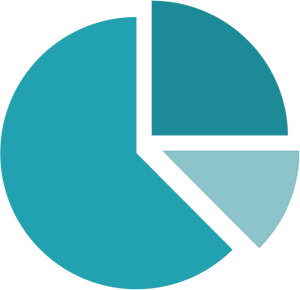Learning to Invest Investment basics
 Learning to invest: learn what investing is and how to invest?
Learning to invest: learn what investing is and how to invest?
Everyone has a different idea of what money means: personal freedom, a sense of security or the ability to afford the things you want in life. By learning the basics, you can begin to make informed financial decisions and start putting your money to work. Learn more about what investing is and is not, the different types of investments and how to choose a financial adviser.
Here is a helpful Investing Basics PDF to get you started.
 Risk tolerance is generally how much variability (ups and downs) in returns in the market the investor is prepared to accept. There are two sides to risk tolerance – the highest average return on an investment, given the highest risk you are prepared to accept.
Risk tolerance is generally how much variability (ups and downs) in returns in the market the investor is prepared to accept. There are two sides to risk tolerance – the highest average return on an investment, given the highest risk you are prepared to accept.
To understand your level of risk tolerance, answer these questions:
- How much risk are you able to handle?
- How much risk are you willing to handle?
Some people may be able to absorb a $10,000 financial loss on a high-risk investment, but aren’t willing to part with the money. Others may be willing to take a big chance on a well-researched opportunity, but simply cannot afford the potential downside.
Your personal tolerance for risk depends on many factors, such as annual income, years until retirement, debt level, whether you have dependents, your need for liquidity, etc. Your risk tolerance also helps determine what investment vehicles might be the best fit—whether it’s low-risk bonds, a mid-level mutual fund or a much-hyped IPO.
Get started on assessing your risk tolerance with the Manitoba Securities Commission.
 Stocks (shares), bonds, mutual funds or real estate? There are a lot of ways you can invest your money. Each has its own pros and cons, and it’s important to know what the differences are in order to choose an investment that’s right for you.
Stocks (shares), bonds, mutual funds or real estate? There are a lot of ways you can invest your money. Each has its own pros and cons, and it’s important to know what the differences are in order to choose an investment that’s right for you.
Before you invest, it’s important to assess how an investment fits within your financial goals and risk tolerance. High returns always come with high risks—there’s no such thing as a high-return, risk-free investment. If you want higher returns, you need to be prepared to accept the risks that come with them.
A registered financial adviser can help you assess your financial needs, goals and tax situation. An adviser can also assist you with building your portfolio and recommend investments to help you meet your goals.
Know who you are
Everyone has a different idea of what money means. It might be personal freedom or a sense of security, or the ability to afford the things you want in life. Whatever it is, it’s important to remember that no one cares more about your money than you. No matter who’s handling your investments, only you will know if you are truly comfortable with the investment choices. It’s up to you to stay on top of your investments and make sure they are working for you.
Know your goals
Once you know your personal money values, take a look at the bigger picture. How do you see yourself down the road?
Use the SMART formula—set financial goals that are
- Specific
- Measurable
- Attainable
- Realistic
- Time-sensitive
For example: Value: Health. I want to buy a bike for transportation and exercise. I’m going to save $50/month for 10 months starting in September so that I can have a new bike the following summer.
Set and review a budget regularly (every 6 to 12 months) to help stay on track to meet your goals.
Know your risk tolerance
Every investment carries some risk. Knowing your ability and willingness to take on risk is crucial to understanding what types of investments will work for you. Your tolerance for risk may depend on
- whether you would rather keep your money safe or seek higher growth
- when you need your money
- how you react to the ups and downs of the markets
- whether you have any debts
- whether you have other sources of income
Check out this easy to understand infographic explaining ways to better manage your money and understand your investment options!
 Everyone has a different idea of what money means: personal freedom, a sense of security or the ability to afford the things you want in life. By learning the basics, you can begin to make informed financial decisions and start putting your money to work. Learn more about what investing is and is not, the different types of investments and how to choose a financial adviser.
Everyone has a different idea of what money means: personal freedom, a sense of security or the ability to afford the things you want in life. By learning the basics, you can begin to make informed financial decisions and start putting your money to work. Learn more about what investing is and is not, the different types of investments and how to choose a financial adviser.
Cash and cash equivalents
This category includes money in your bank account and investments that are generally very safe and give you quick access to your money. Risks associated with these investments range from very low to medium, and returns are earned in the form of interest. However, the rates of return are relatively low compared to other types of investments.
- Savings bond. A loan to a government that is secured by the general credit and taxation powers of that government.
- Guaranteed investment certificate (GIC). A deposit certificate issued by a financial institution.
- Treasury bill (T-bill). A fixed-income security in short-term debt instruments guaranteed by the federal government.
- Money market fund. A mutual fund that invests in short-term fixed-income securities.
Fixed-income securities
Bonds and other fixed-income securities are investments based on debt. When you buy a bond, you are lending money to a government or company for a certain period of time. In return, that “borrower” promises to pay you a fixed rate of interest at certain times and to repay the bond’s face value at the end of its term (its maturity date). The face value is the value the bond was issued at. Bonds tend to offer better rates of return than cash equivalent investments (such as GICs or T-bills) because you’re taking on more risk by lending your money for a longer period.
- Bond. A loan to a government or company that is secured by that government’s power to tax or by specific company assets.
- Debenture. A loan to a company that is not secured by specific assets but may be secured by the issuer’s general assets.
- Strip bond. Interest payment coupons and the principal portion of a bond that have been separated from each other and are sold as individual investments.
- Mortgage-backed security. An ownership interest in a pool of mortgages.
Equities
When you buy stocks (also known as shares or equities), you become a part owner of a company. You may be entitled to vote at shareholder meetings and each share you own represents a claim on the company’s earnings and assets. Any profits the company allocates to its shareholders are called dividends. Compared to some other types of investments, stocks can be riskier but potentially offer higher returns. The value of a stock can go up and down – sometimes frequently and sometimes by a lot.
- Common share. A share that has voting rights.
- Restricted voting share. A share that has restricted or no voting rights.
- Preferred share. A share that pays a fixed dividend.
- Flow-through share. A special type of common share issued by oil and gas or mineral exploration companies that allows certain tax deductions.
- Rights and warrants. The right to buy additional securities from the company at a certain price within a certain time.
Investment funds
An investment fund is a collection of investments from one or more asset classes. Each fund focuses on specific investments, such as government bonds, shares of large companies, stocks from certain countries or a mix of stocks and bonds. When you buy an investment fund you are pooling your money with many other investors’ money. This allows you to participate in a variety of investments at a relatively low cost. Most funds are managed by a professional manager, freeing the investors from making complex investment decisions.
The value of a fund will change as the value of what it invests in goes up and down. The amount of risk associated with a particular fund depends on what the fund invests in.
- Mutual fund. A fund that holds shares in many companies and continually issues units or shares to investors.
- Closed-end investment fund. A fund that issues a finite number of units or shares, which may trade on a stock exchange.
- Exchange-traded fund (ETF). A fund that holds the same mix of investments as a stock or bond market index and trades on a stock exchange.
- Segregated fund. An insurance product that combines investment funds with insurance coverage.
- Labour-sponsored investment fund (LSIF). A fund that provides venture capital to new and small businesses and offers tax incentives to investors.
- Commodity pool. A fund that invests in derivatives or commodities that conventional mutual funds are not permitted to invest in.
Alternative investments
Alternative investments are some of the more complicated types of investments. They can offer higher-than-average returns, but also come with higher-than-average risks. Alternative investments are typically meant for more sophisticated investors or investors who can afford to take higher risks.
Although you may be offered an investment in this class, it is important that you be comfortable with all risks and costs involved, and never invest in anything you don’t fully understand.
- Options. The right to buy or sell an asset at a specific price for a specific period. A “call” option gives the holder the right to buy an asset at a specified price within a specified time. A “put” option gives the holder the right to sell an asset at a specified price within a specified time. The underlying asset may be a stock, a commodity, a currency or an index.
- Futures and forward contract. A contract where the seller agrees to deliver a specified amount of an asset to the buyer at a specified price on a given date.
- Income trust. A trust designed to distribute cash to investors. The most common types are
- real estate investment trusts (REITs)
- oil and gas income trusts, also known as royalty trusts
- business income trusts
- Limited partnerships, including flow-through limited partnerships, are an interest in a partnership consisting of
- a general partner who manages the partnership
- limited partners who provide the investment capital
Limited partnerships typically seek to achieve capital appreciation by investing in a specific industry sector (such as real estate or oil and gas) that provides tax credits to investors.
- Principal protected note (PPN). An investment that promises to return to you the original amount you invested (usually after 6 to 10 years). Any potential return above the principal is typically variable and is usually linked to a market index, fund or other underlying investment.
- Linked note. A hybrid investment product that combines the features of fixed-income investments and derivatives. The return is linked to the performance of an underlying benchmark, such as one or more stocks, a stock market index, a commodity, a currency, an investment fund or other portfolio.
- Hedge fund. An investment pool that uses advanced investment strategies not generally permitted for traditional mutual funds, such as leverage, long and short positions, and derivatives, with the goal of generating high returns.
- Foreign currency. Investing in different currencies to make money on changes in exchange rates. Also known as “forex” or “FX trading.”
Exchange-traded funds (ETFs)
A typical ETF is a security that tracks an index, similar to an index mutual fund. Unlike mutual funds, ETFs trade on an exchange, fluctuate in price daily, have a higher liquidity and have lower fees. There are several different types of ETFs, but generally the advantages are diversification, no minimum investment requirements and lower expense ratios. Many ETFs are considered passive investments because they are designed to track an index, such as the TSX or S&P 500, and the manager is not actively trying to outperform the index or market.
Like any investment, ETFs carry a certain amount of risk based on the assets they hold. Past performance can help you assess volatility and potential returns. Unlike mutual funds, distributions (dividends, interest and/or capital gains) are not typically used to purchase more securities; rather, they are held in your investment account until you decide what to do with them (although some ETFs do offer dividend reinvestment plans).
 What does a financial adviser do? Simply put, a financial adviser is a professional money manager. They provide you with sound investment advice and recommendations. Use their expertise and rely on them for support and information.
What does a financial adviser do? Simply put, a financial adviser is a professional money manager. They provide you with sound investment advice and recommendations. Use their expertise and rely on them for support and information.
Here are a few things to consider when choosing a financial adviser:
- Find someone you’re comfortable with. Ensure they can work on your whole financial picture to make joint decisions with you.
- Be honest with your adviser. Make sure your adviser is aligned with your values and goals.
- Ask questions. A professional is not there to judge you, but to help you. Remember, there is no such thing as a stupid question!
It’s your money—make sure you are well-informed.
Here is a guide to Working with a Financial Adviser to help you learn more.
Check with the Manitoba Securities Commission for more tips on finding an adviser.
 Question:
Question:
What is a Know your client “KYC” form and should my adviser complete this form with me?
Answer:
Your adviser is required to keep on file a form that accurately describes your financial situation, investment objectives, knowledge, experience and risk tolerance. There is no standard form. This “know your client” information may be part of your account application or on a separate form. While this information may seem overly personal, it’s critical for determining what investments are suitable for you. The form is also a key document if something goes wrong. Make sure the information is correct and that you understand it before you sign. If it’s incorrect, it could lead to unsuitable advice and erode your legal protections if you have a dispute. Ask your adviser to update this information whenever your personal or financial situation changes and be sure to get a copy.
Question:
How does my financial adviser get paid?
Answer:
Question:
What do I do if I have a complaint against my financial adviser?
Answer:
If you have a problem If you believe that your adviser is not working in your best interests, you may want to make a complaint or consider finding another adviser. Here’s what to do if you want to make a complaint:
a) Start with your adviser or their firm. Be clear about what went wrong and when. State the outcome you expect (for example, an apology, getting your account corrected or getting your money back). If you’re not satisfied
b) Ask about the firm’s complaint process. Follow the steps suggested. This could involve contacting a manager or the firm’s compliance department. Put your complaint in writing. Be sure to keep notes of who you spoke to and what was discussed. If that doesn’t work
c) Contact your local securities regulator. They can tell you what your options are, depending on the type of complaint you have. In most cases, you have to go through the firm’s complaint process first. You may also want to consult a lawyer to get advice on your rights and options.
Manitoba Financial Services Agency
500-400 St. Mary Ave.
Winnipeg, Manitoba, Canada R3C 4K5
Call (204) 945-2548
Email securities@gov.mb.ca
 Question:
Question:
Where can I go to find information on learning to invest?
Answer:
Check out all the great resources that the Manitoba Securities Commission offers here in the MoneySmart Manitoba website.
Question:
What is an investment club?
Answer:
An investment club is a group of individuals who pool money to invest; members typically meet periodically to make investment decisions as a group through a voting process and recording of minutes, or they gather information and perform investment transactions outside the group. Investment clubs provide members with a means to learn about markets while meeting and working with people with similar interests.
A couple of books that can provide additional information are
- Investment Clubs: How to Start and Run One the Motley Fool Way by Selena Maranjian
- Starting and Running a Profitable Investment Club: The Official Guide from The National Association of Investors Corporation by Thomas E. O’Hara and Kenneth S. Janke Sr.
Question:
How do I find out if a firm or individual is registered with the Manitoba Securities Commission?
Answer:
The National Registration Search contains the names of all registrants (individuals and firms) in Canada, with the exception of those registered solely with the Ontario Securities Commission. Please refer to the Canadian Securities Administrators website under National Registration Search.
Mutual funds are a popular investment choice among many Canadians. However, many mutual funds dealers have been charging their clients fees for services and advice that the client may not actually be receiving.
After extensive research and consultation, the Manitoba Securities Commission and the other provincial regulators across Canada are removing a type of fee charged by mutual fund dealers in transactions where they are not providing advice – trailing commissions. The decision will come into effect on June 1, 2022.
Trailing commissions: You should get what you pay for.
Trailing commissions are fees paid to dealers for ongoing “suitability” advice they provide to their clients. Most mutual fund dealers have an obligation to make sure that investments held by their clients are appropriate and in line with the client’s investment goals, However by definition order execution only dealers – often referred to as “discount brokers” – do not have that responsibility and do not provide advice.
What to do with this information today
After June 1, 2022, you won’t be charged for these fees if you are not being provided the services. Until then, be mindful that they are there, and take the right steps to minimize them.
Classes of Mutual Funds
There are different letter classes of mutual funds, with different management expense ratios (MER), meaning, different classes have different levels of fees and expenses.
If you have an A or B Series mutual fund account and are not receiving financial advice from a mutual fund dealer, switching to a lower fee class, such as series D, will reduce the unnecessary costs you are paying.
Fund Facts
Before switching mutual fund series or purchasing a mutual fund, make sure you receive the Fund Facts sheet from your dealer.
The Fund Facts sheet is a simplified document that outlines important information you need to know about the mutual fund you’re considering, so you know exactly what you are paying for. It includes information on:
- What the fund invests in, including the top 10 largest investments in the fund
- The risk rating for the fund
- The fund performance (up to 10 years back)
- Costs associated with owning the fund, including sales charges, the Management Expense Ratio (MER) and other fees
Staying informed about your investments and the associated fees and regulations is important to ensure you are getting the most from your money.
Brush up on your financial knowledge by following us on social media:
Learn more about the basics of mutual funds here.




 (5 votes, average: 4.00 out of 5)
(5 votes, average: 4.00 out of 5)You may also like:
Investing basics: Getting startedInvestment basics (see accordion above)
